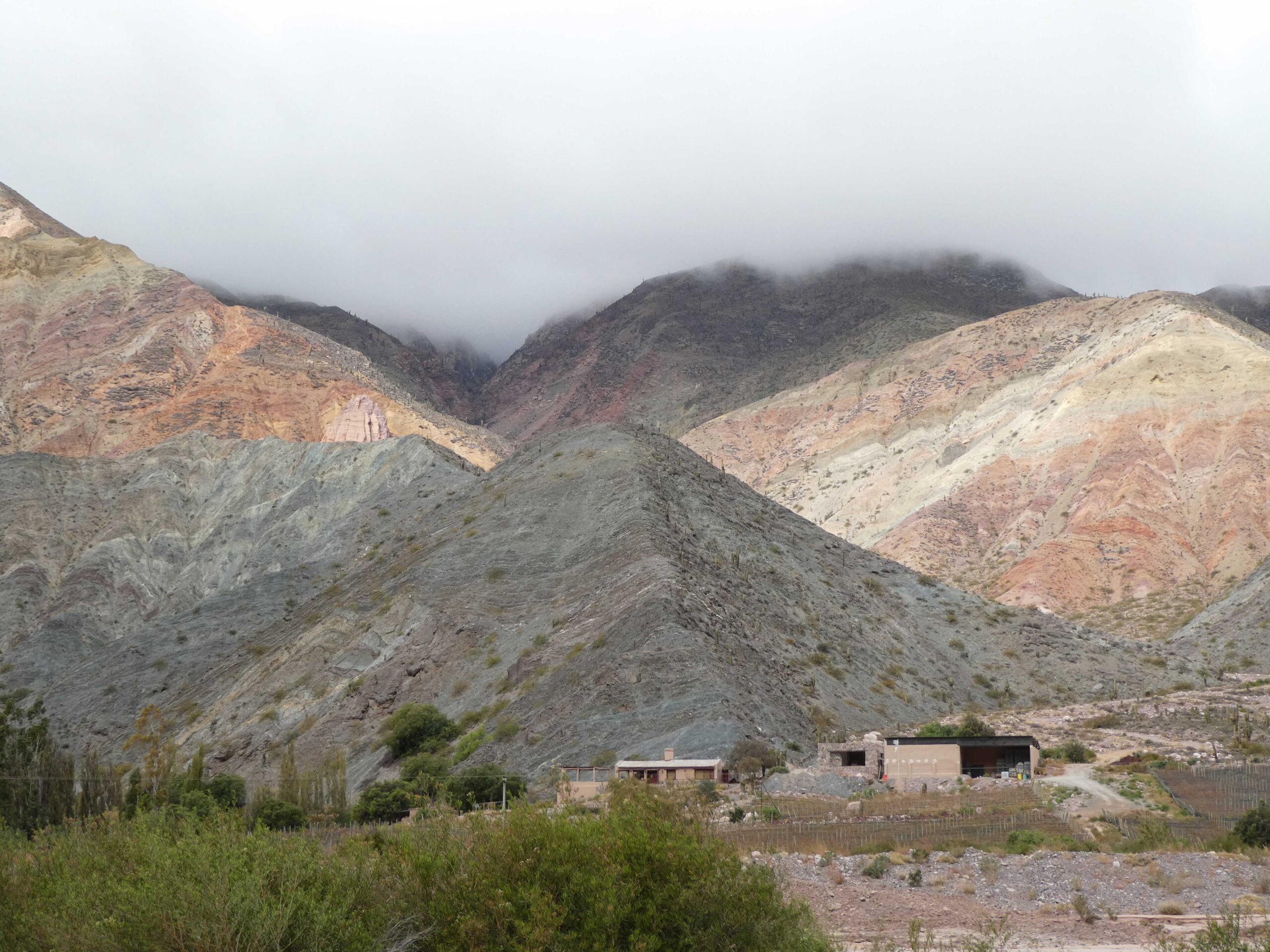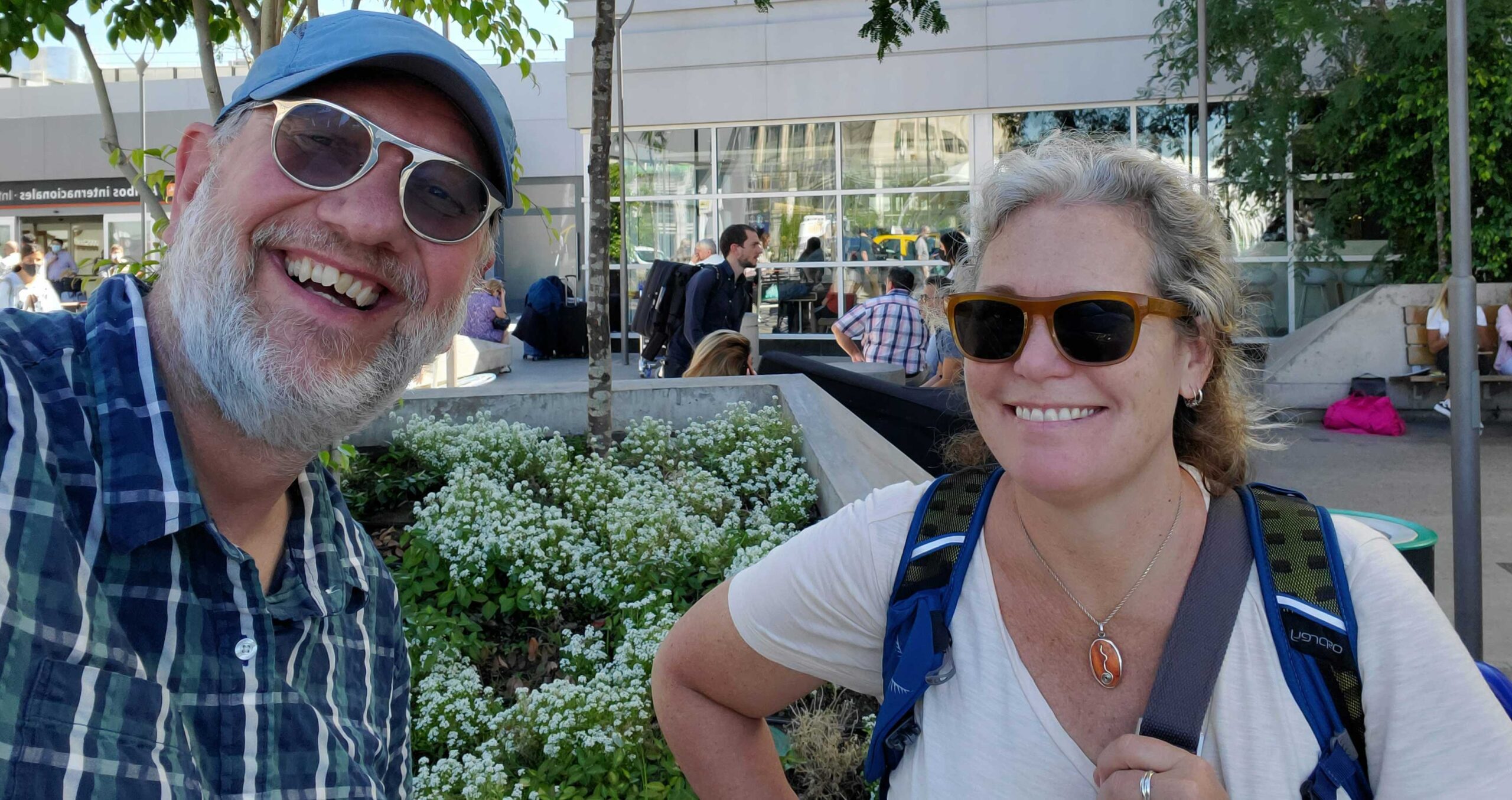In the previous post about our travels in Uruguay, I mentioned that they culminated in an epic travel day of taxis, bus, ferry and plane to bring us north to Salta Province. This is another high-desert region in the long range of the Andes mountains with Jujuy Province sandwiched in-between its borders with Bolivia and Chile. The city of Salta is wonderfully Colonial in its architecture and culturally rich from the many native communities that contribute to the food, music, and feel of the area. It has certainly been the most Latin of the areas we’ve visited in Argentina, with a feel more reminiscent of Spain than other continental Europe. We took a few photos of squares, buildings, and churches, but our photos don’t really capture Salta. Just go visit. Really. You should. Here they are anyway.

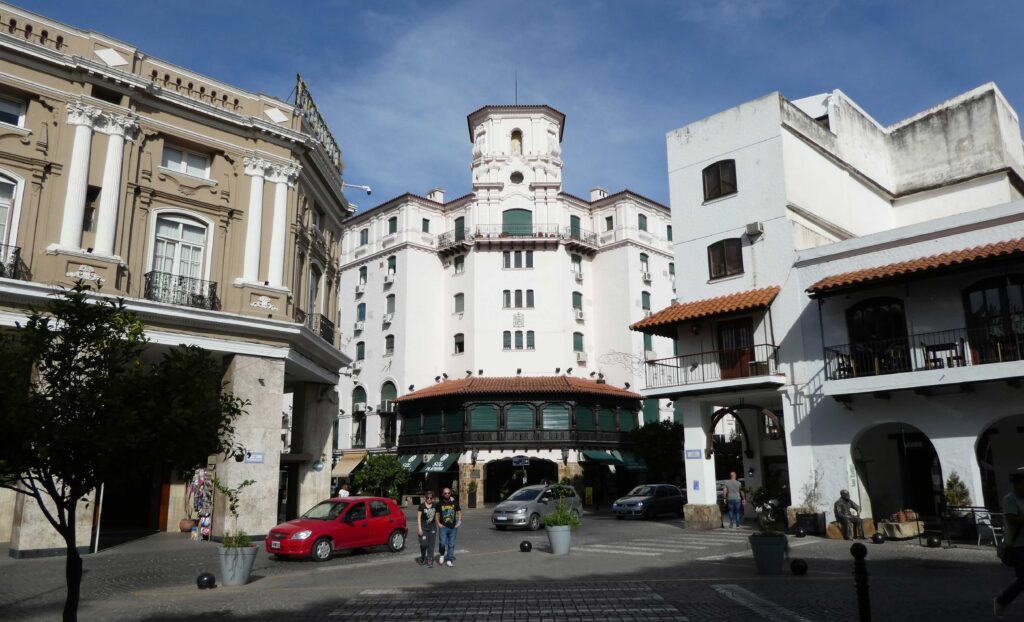
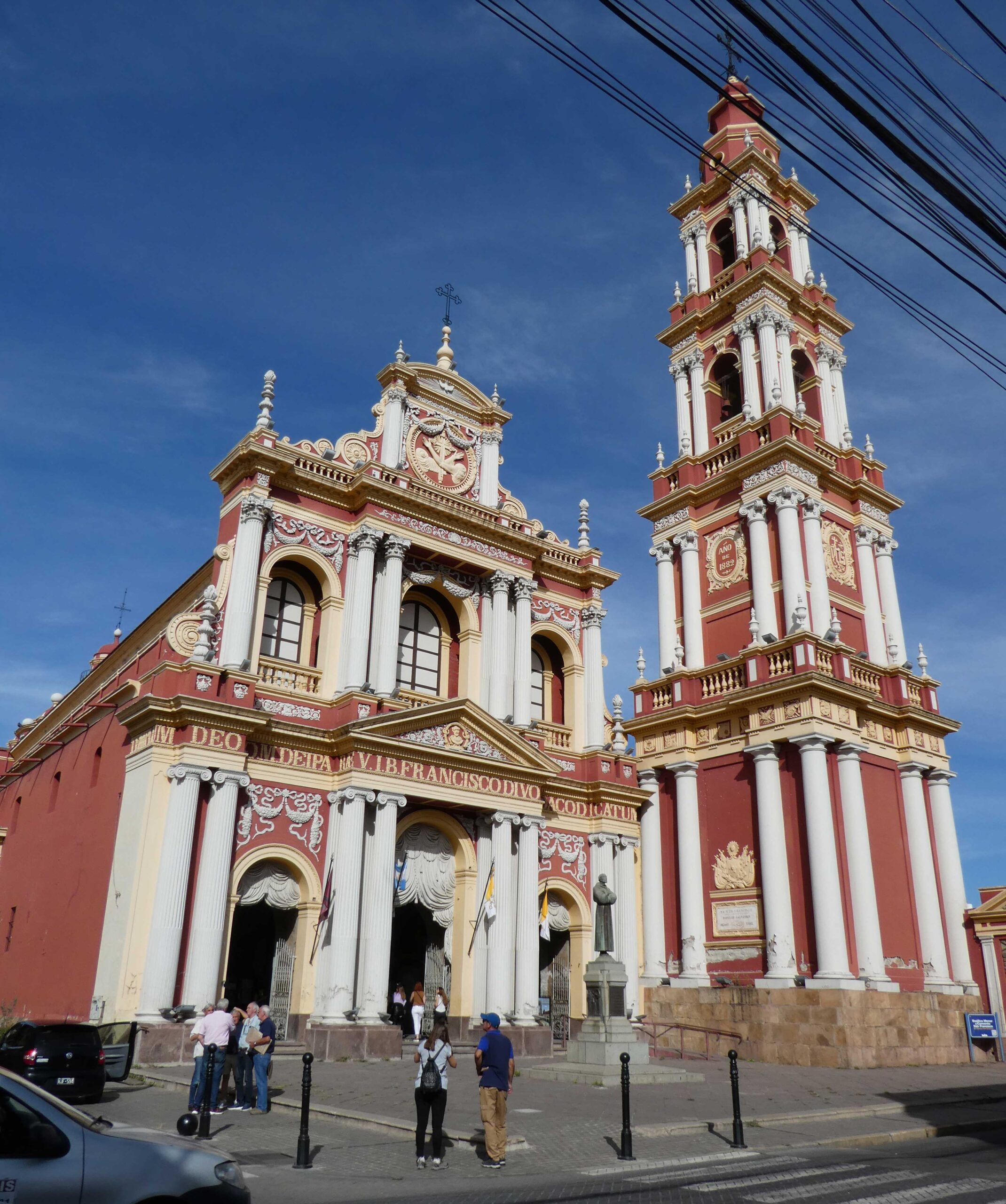

We spent 5 nights in the city in a couple of really excellent hotels and ate at truly fantastic restaurants. It was the first time that we were served herbed bean tapenade in olive oil with our table bread instead of the ubiquitous mayonnaise or cream cheese. We also ate a lot of llama in traditional corn chowders, as steaks, and salami we dubbed “sallami.” The Spanish is very different here in Argentina from what we are used to and the double Ls are pronounced with a J sound, making it “sajami.” Anyway, I’m just amusing myself now. It was all really good.
The people of the Salta region are also really proud of their Inca heritage. There is an archeological site at the nearby summit of Llullaillaco where the mummified remains of three children were discovered and are now on display at the museum in the main town square. No photography was allowed in the museum, but we can attest that it was a truly unique and amazing experience. The curation helps you understand the traditions and beliefs of the Inca and how it impacts the culture of the Salta region today. It also gets you up close and personal with the amazingly preserved sacrifices and the objects that were left with the children to assist them in the spirit realm.

Tren de los Nubes
We also spent an agonizing 14-hour day on a bus-train-bus tour to a railroad bridge above fourteen thousand feet on the train to the clouds. Our guide book spoke of this wonderful historic train with leather interior and a dining car where you enjoyed this amazing ride on a high-altitude rail line that used to serve as the main shipping route for the mining industry in the region. At some point in the past couple of years, they replaced the historic train with a used commuter train and shortened the rail portion of the tour buses.

We were a bit surprised to arrive at the train station Saturday morning to 6 huge long-range buses and an hour-long line of people to check in. The scenery was amazing, and the journey culminated in the train crossing the bridge and reversing so that everyone could get out and take pictures. The buses stopped at several small towns on the way to the train station. We also stopped for these llamas crossing the road.

Of course, when we stopped for lunch before boarding the train, the activities of the drive had stimulated the appetite, and we tried the llama stew.

Despite how painfully long the ride was and how disappointing the train, when we looked back at the pictures, we had to admit we saw some great scenery. To give it its due, here are a few.

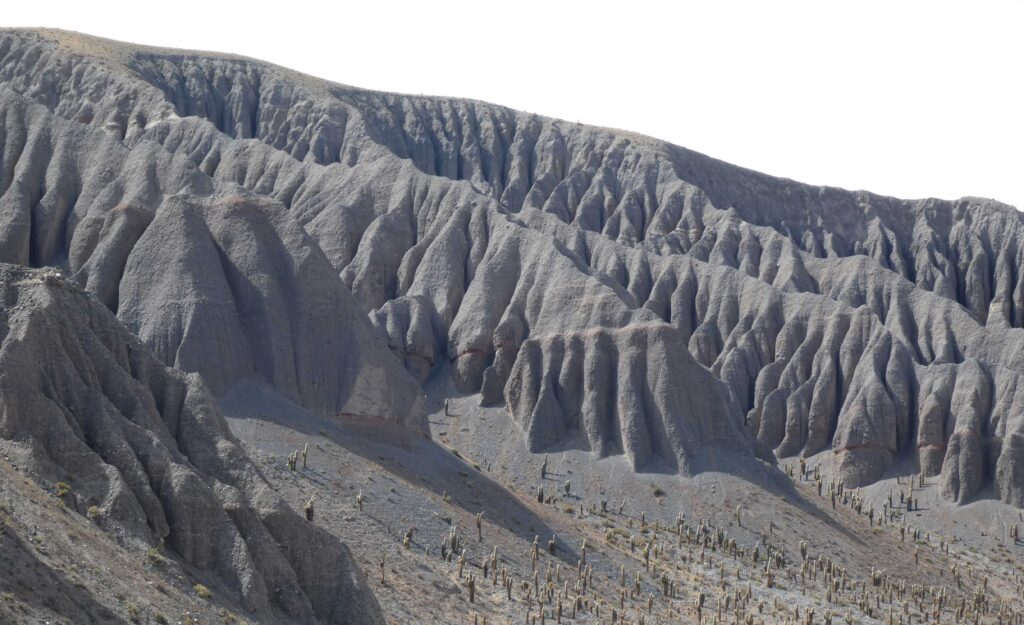


Of course, we certainly had to capture pictures of the train crossing the bridge. It was why we were there.
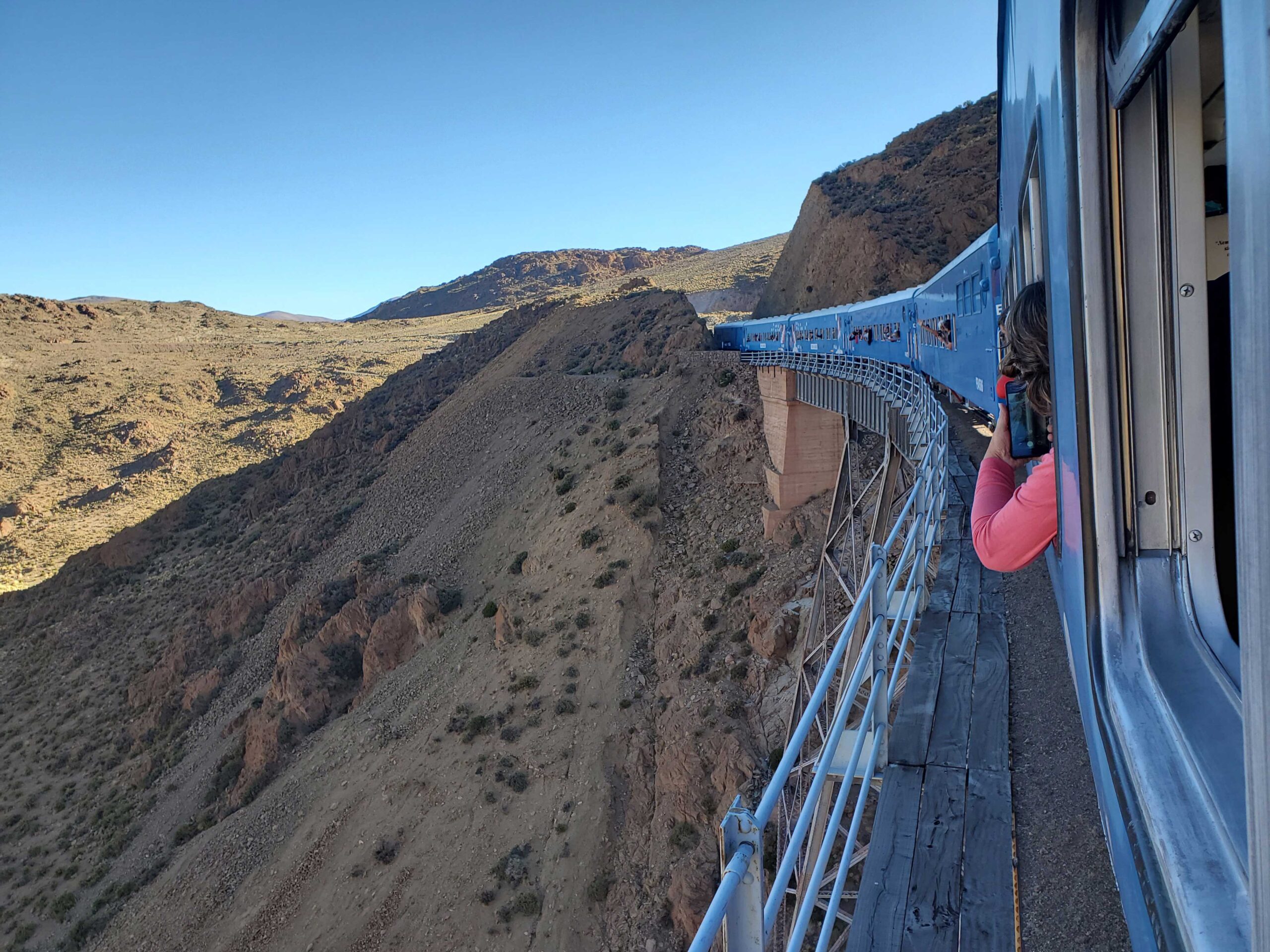
We may not have mentioned it before, but Argentinians are extremely nationalistic and proud of their country, as they should be. We see evidence of it everywhere, including in all the signs that say “Malvinas son Argentinas.” Look it up. To culminate the Tren de los Nubes ride at the bridge, they raised the Argentine flag and played the national anthem on loudspeakers as everyone sang along.

It was a unique experience, and I’ll leave it there.
North of Salta
The area north of Salta along Route Provincial 9 is dotted with small towns, the city and province of Jujuy, and amazing mountain landscapes. It is also the route to Salinas Grandes, which we unfortunately did not have time to visit. We hope to make up for it by visiting Uyuni in Bolivia. We drove up a really crazy twisting mountain road that was unbelievably green with two very grateful hitchhikers out in the middle of nowhere on a rainy day. It is good to know that the traveling hippy adventure culture is still alive and well in the world. They were great people and we did our best to communicate through the language barrier while we tried to avoid oncoming traffic on narrow roads and going off the verdant cliffs. It really wasn’t as scary as all that, and we eventually emerged in another high-desert region where one of the main attractions is Cerro de los Siete Colores near the small town of Purmamarca.
The setting did not disappoint and was well worth the drive. We’ll let the pictures speak for themselves.
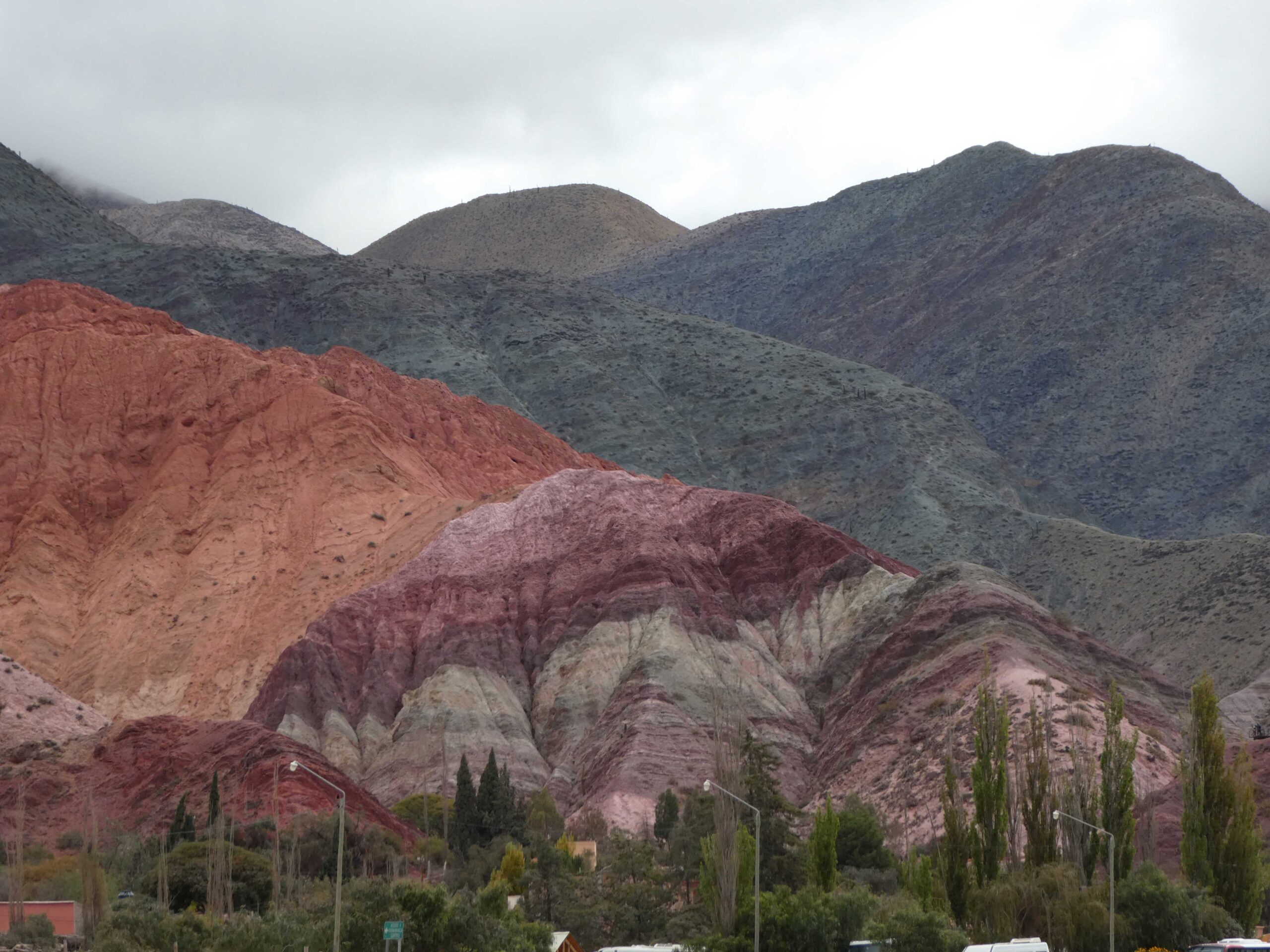

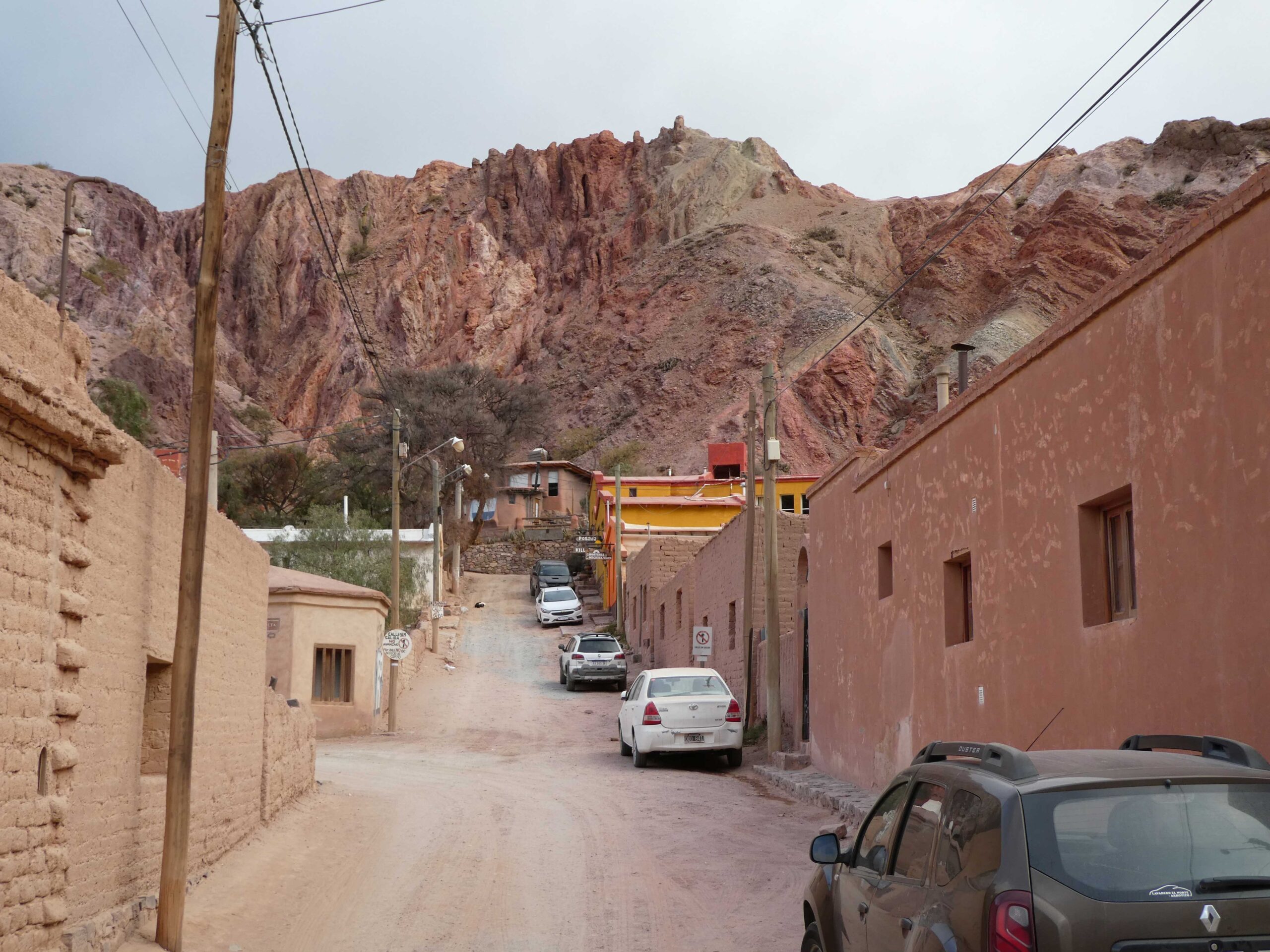
We arrived in Purmamarca late in the afternoon, ate some llama (of course) and still had a bit of a drive to the town of Tilcara where we were staying. We spent the next day driving north chasing the Tropic of Capricorn monument, which we never found (!), and then reversing course south to drive once again through and past Salta to get to the wine region of Cafayate. Cafayate is an entirely different post simply due to the indescribable canyon we drove through to get there that we did not anticipate and were not at all prepared for. Probably said this many times in posts about our travels in Argentina, but it was unlike anything we’ve ever experienced.
To wrap up the journey we took north of Salta, we’ll share some pictures of landscapes that are amazing in their own right and hold their own against Cerro de los Siete Colores in geological grandeur. Then we’ll let you judge it against what we found on the way to Cafayate if the pictures to it justice.
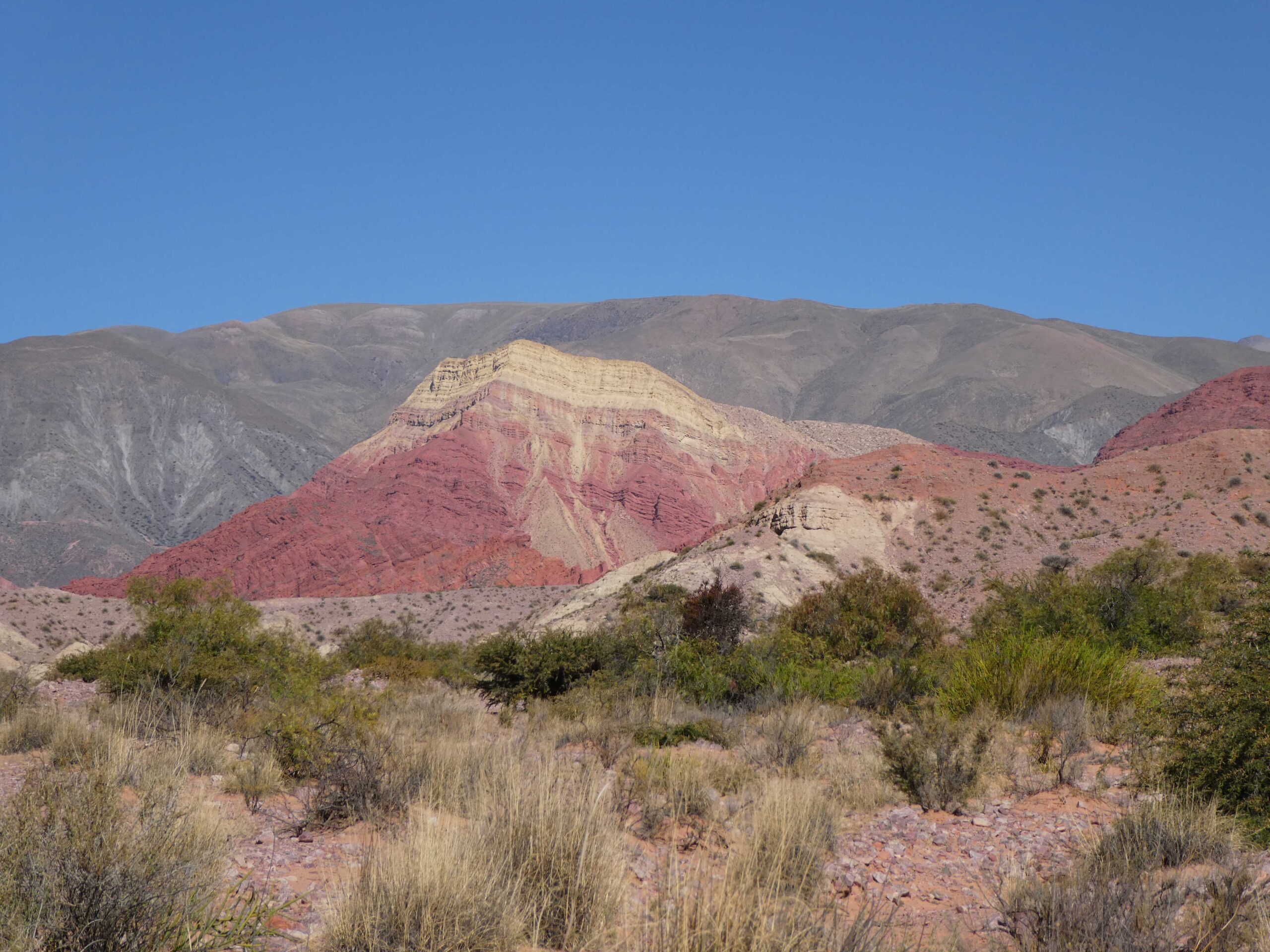
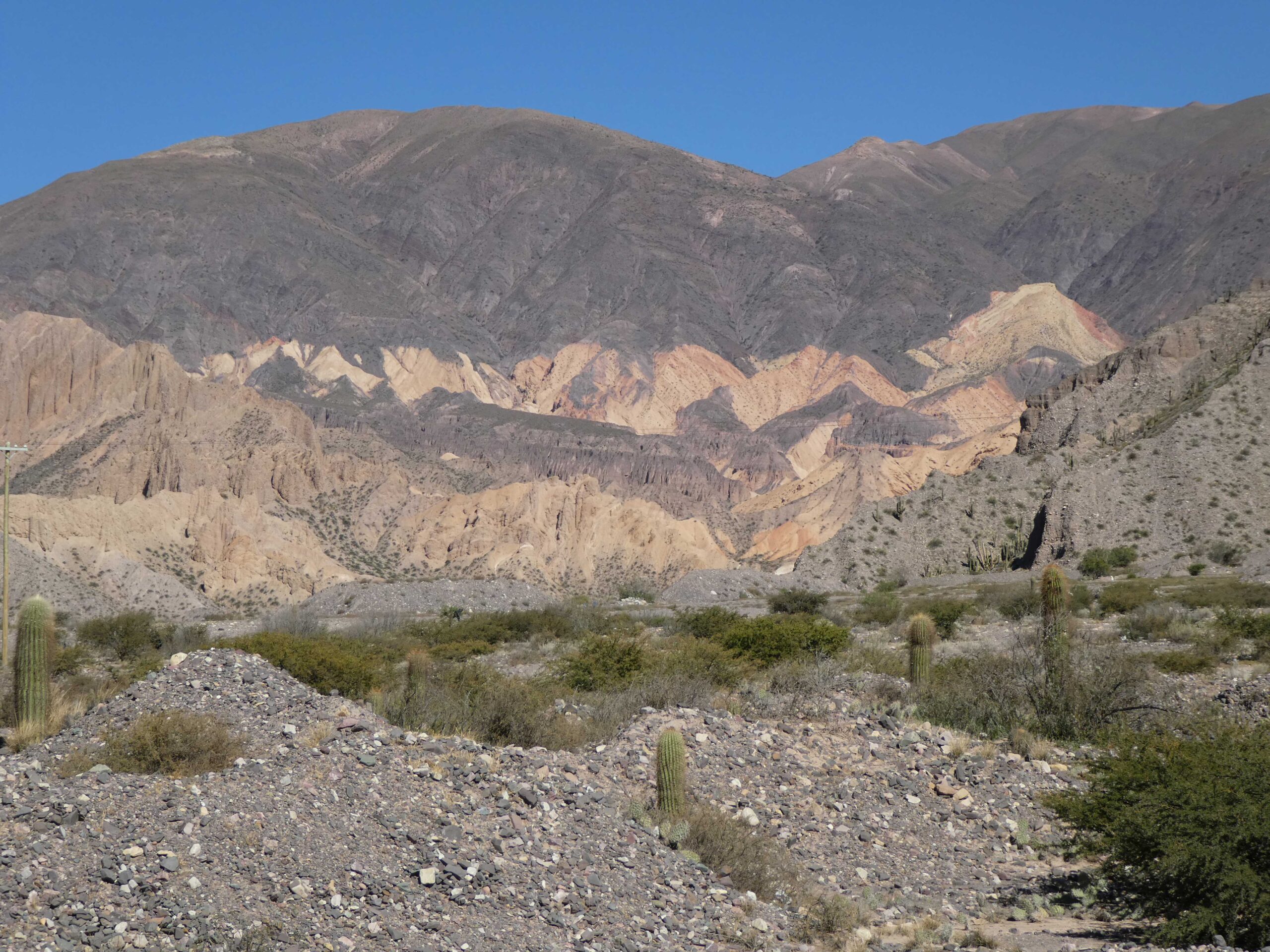

And, who doesn’t love a good roadside attraction? Here’s a giant llama we encountered that served as the entrance to a souvenir stand.
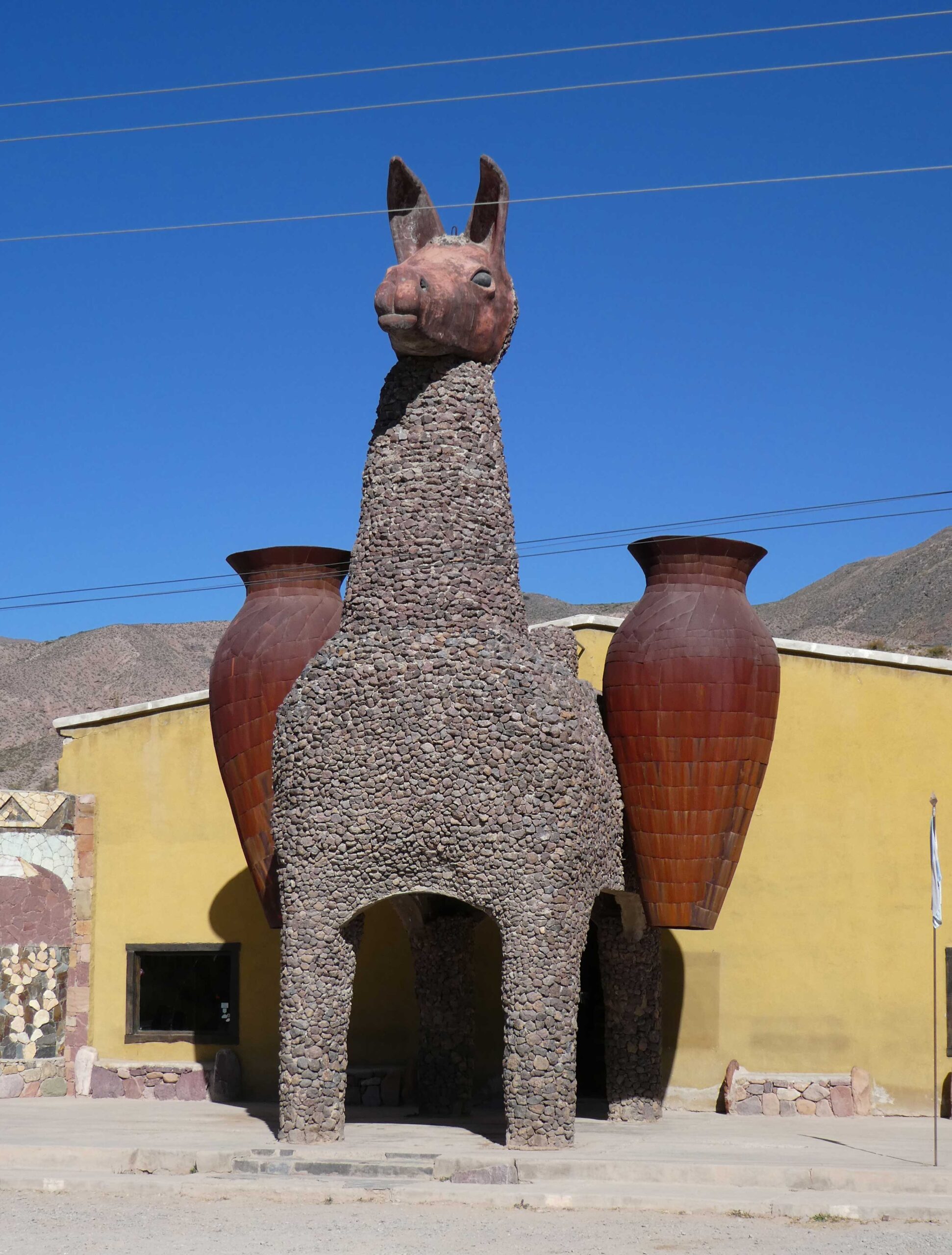
We also ran across this amazing little cemetery nestled against yet another multi-colored mountainside. The family tombs are typical of Argentina and can be found all over the country. This collection was wonderful to find along our drive. They look like tiny houses for the dead from the road and are easily mistaken for a scale model town.
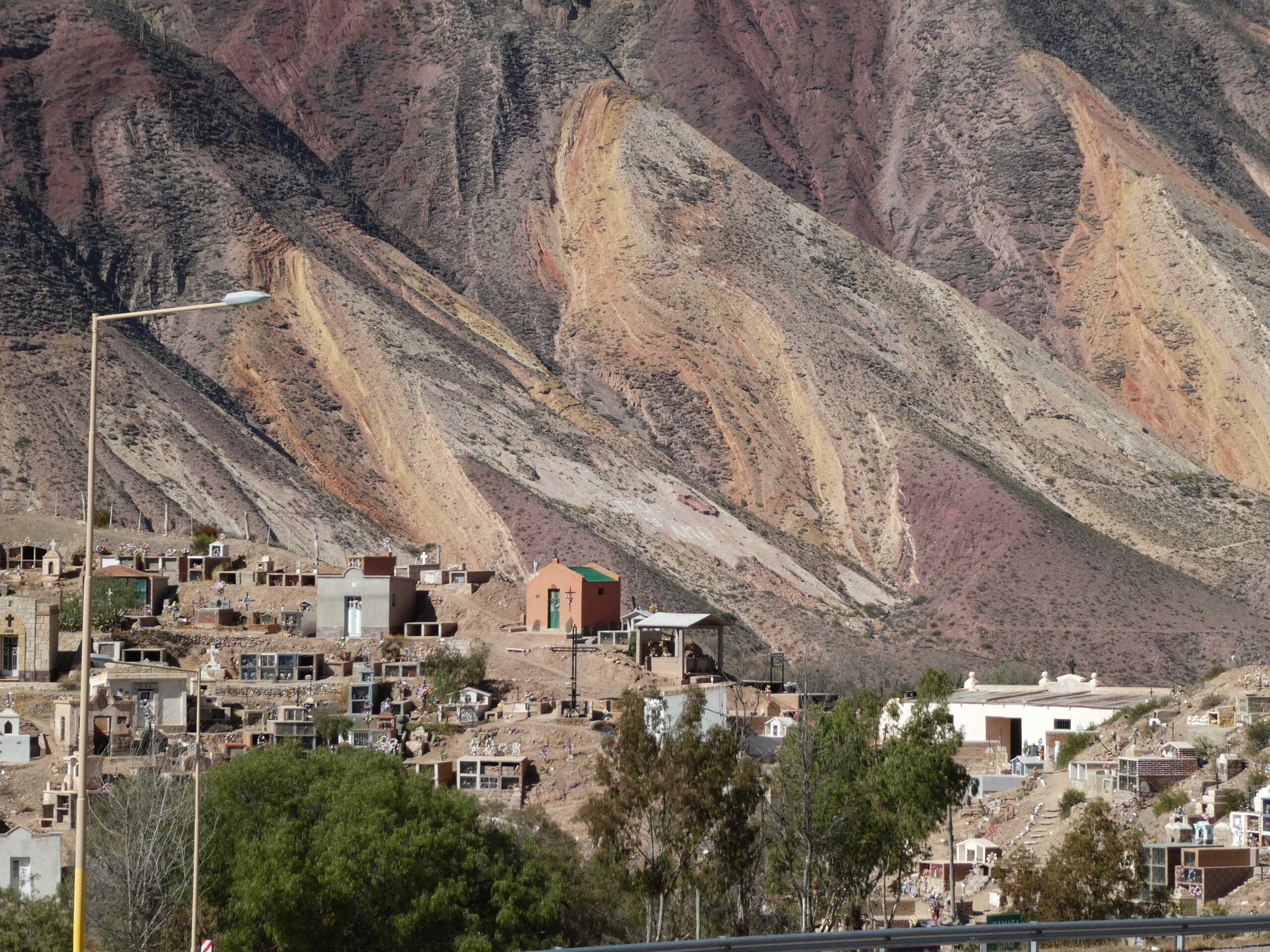
Okay, maybe just one more. The cloudy afternoon on our first day of the drive gave this set of peaks an eerie backdrop. We are very glad we took the time to drive north of Salta and experience the small towns and colorful stripes of the northern mountains. The food wasn’t bad either.
